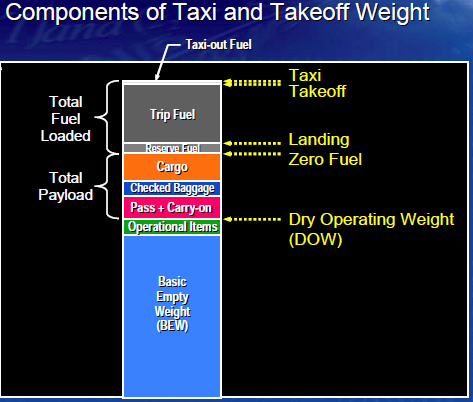Short answer
Determination of mass and balance (or weight and balance) is a critical task for the crew, an error in this operation may have tragic consequences.
Weighing passengers and carry-on items is mandatory per regulation.
Either standard predetermined weights, or actual weights can be used in this operation. Airlines usually use predetermined tables. Tables values take into account different types of travel (e.g. regular and charter).Aircraft are not weighed prior to each flight, but the basic empty weight must be known and checked periodically per regulation.
Aircraft are weighed simply using scales under the carriages :-)

(source)
The other method is to use jacks. See further below for an image.
Weight and balance
The different elements composing the takeoff weight:

All of these elements must be determined prior to taxi and takeoff.
See detailed explanations and calculations starting at page 54 in: Mass and Balance in Aircraft.
PAX weight applicable procedures
For an airliner, the PAX portion is relatively small compared to the total mass, so the passengers mass is usually estimated based on standard passenger mass tables and the number of PAX per cabin section. Each airline may provide its own standard mass tables, but standard tables are proposed with the applicable regulation:
- JAR-OPS1 or EU-OPS1 for Europe (section JAR - OPS 1.620 Mass values for passengers and baggage). Values valid in 2008:



(source)
Those tables have been establish using airlines data obtained by surveys. They are updated from time to time.
In case the operator wants to establish their own equivalent tables, JAR - OPS 1.620 provides a detailed operating mode to sample passengers and weigh them.
For the EU, a new survey was conducted by the European Aviation Safety Agency in 2009 and a proposal for table updates issued:
Special cases
There are cases where it is obvious the actual mass and balance will be erroneous if the standard tables are used (this is especially true for a small cabin).
In these cases the operator must improve the evaluation by actual weighing of either all or a sample of passengers and their baggage. The procedure already mentioned for establishing standard tables is used (JAR - OPS 1.620).
Putting all elements together
All masses, arms (distance to the reference center) and moments are finally reported on the aircraft manifest to calculate the correction that must be used for the takeoff (trim amount).

Basic empty weight determination
The aircraft is not weighed for each takeoff, still it has been weighed to determine its basic empty weight and its center of gravity. This operation must be done every 3 or 4 years (9 or 18 years in a large fleet, this is a specific process) according to JAR Ops 1.605, Appendix 1.
Platform scales under the carriages may be used:

(source)
Another method is to use jacks equipped with a transducer at their top:

(source)
Related FAA regulations and JAR-OPS
- FAA AC 120-27E and JAR-OPS 1.620 to determine the mass of the baggage, passengers and carry-on items.
- FAA AC 120-27E, JAR-OPS 1.607, JAR-OPS 1.615 for the determination of operational items, which include the crew and the crew baggage (there is also a table, that I won't include to prevent comments on the differences with the passenger table -- All tables are based on survey from airlines). The operational items also include catering, emergency equipment, spare parts..
May be interesting too:

